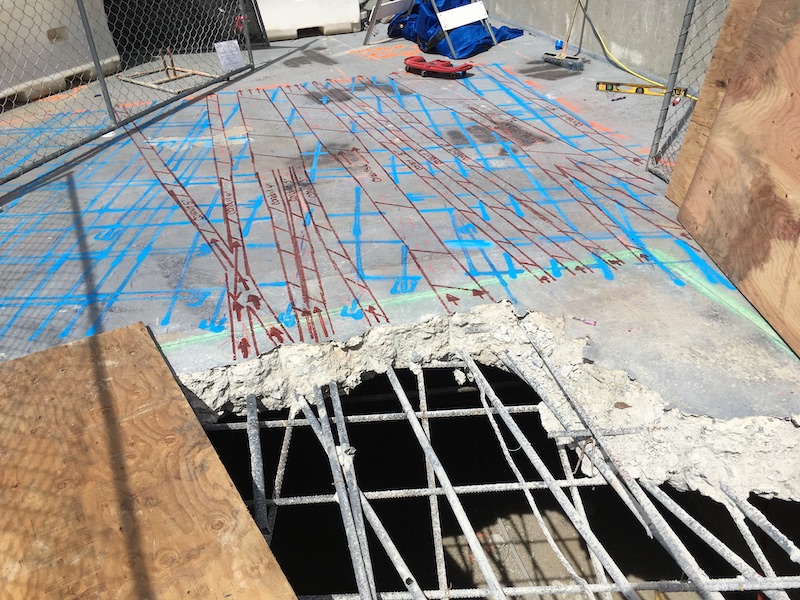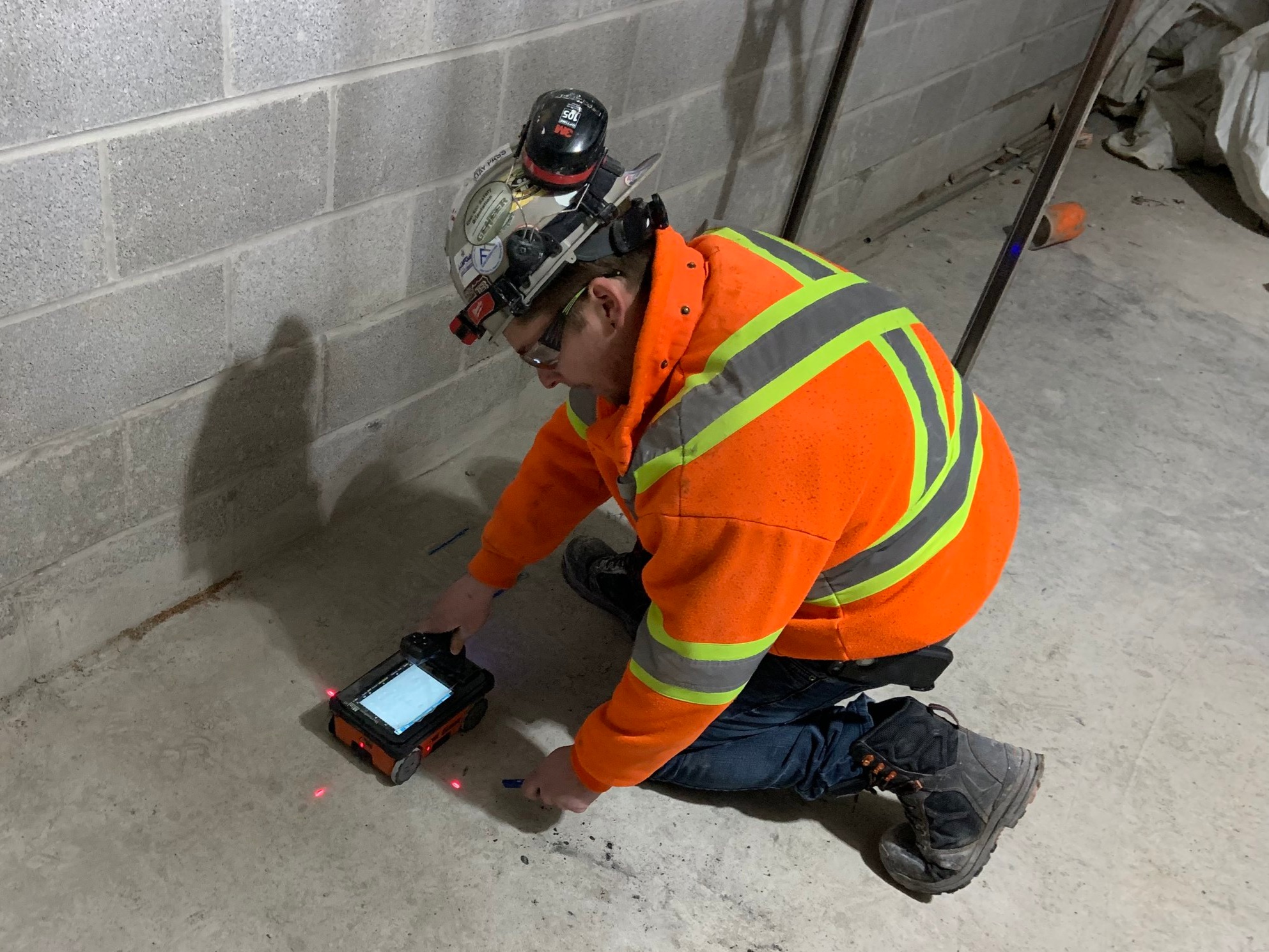Concrete Scanning: Your Shield Against Unforeseen Obstacles in Building And Construction Projects
By using the power of sophisticated scanning methods, building professionals can proactively recognize covert threats below the surface area, guaranteeing a smoother and more effective project shipment. As we explore the relevance of concrete scanning as a protective shield versus unforeseen challenges in construction jobs, a much deeper understanding of its benefits and applications arises, shedding light on the transformative effect it can have on the sector as a whole.
Significance of Concrete Scanning
Concrete scanning plays a crucial function in making sure the safety and stability of building and construction projects. By using innovative modern technologies such as ground-penetrating radar (GPR) and electromagnetic induction, building and construction groups can accurately find rebar, post-tension wires, conduits, and other prospective blockages within concrete frameworks. This procedure is necessary for protecting against costly damages, making certain architectural stability, and maintaining job timelines.
One of the primary reasons concrete scanning is so vital is its ability to reduce dangers during the construction phase. By identifying surprise risks below the surface, such as gaps or worn-out areas within the concrete, contractors can proactively resolve these problems before they escalate into more considerable problems. This positive approach not only enhances worker safety yet additionally decreases the possibility of building delays and budget plan overruns.
Additionally, concrete scanning allows construction groups to make informed choices based upon accurate information. By having a clear understanding of the subsurface conditions, project managers can intend excavation, boring, or reducing tasks a lot more successfully, minimizing the capacity for unintended damage to essential structural aspects. Inevitably, purchasing concrete scanning solutions is an aggressive measure that can conserve construction firms time, cash, and track record in the long run.
Advanced Technologies for Detection

An additional cutting-edge technology is Electromagnetic Induction (EMI), which discovers metallic and non-metallic items underground by inducing electro-magnetic areas. In Addition, Acoustic Pulse Echo (APE) innovation makes use of sound waves to assess the condition of concrete frameworks and find gaps, delaminations, or splits.
In addition, innovations in infrared thermography have made it possible for the discovery of dampness infiltration and insulation voids within concrete structures. This technology help in avoiding future damage and making sure the durability of building and constructions. By including these innovative technologies right into concrete scanning methods, building and construction projects can minimize threats and enhance general job results.
Benefits of Proactive Scanning
Executing aggressive scanning methods in building tasks improves the very early detection of prospective subsurface challenges, leading to improved job effectiveness and expense financial savings. By using concrete scanning modern technologies such as ground-penetrating radar (GPR) and electromagnetic induction, building groups can recognize concealed hazards prior to they intensify into costly problems.
By identifying possible obstacles early on, construction staffs can take that site preventative steps to alleviate threats and ensure a safer working setting for all involved. On the whole, the proactive strategy to concrete scanning not just conserves time and cash but also boosts the total quality and success of building tasks.
Enhancing Job Efficiency
To maximize building and construction job end results, the proactive scanning methods used not just enhance security but also play a critical function in boosting total project effectiveness. By carrying out extensive concrete scanning before commencing any building tasks, potential barriers and threats below the surface can be determined and reduced early on. This proactive approach decreases the possibility of costly delays, rework, and accidents, therefore simplifying the project timeline and budget plan.
Enhancing job effectiveness through concrete scanning involves utilizing advanced modern technologies like Ground Penetrating Radar (GPR) and 3D imaging to properly draw up subsurface functions and utilities. This in-depth information makes it possible for construction teams to intend their tasks a lot more efficiently, staying clear of encounter existing structures or utilities, enhancing source allocation, and minimizing downtime. Additionally, by preemptively attending to any underground complexities, the building process can continue smoothly, with less interruptions and unanticipated challenges. Inevitably, the integration of concrete scanning into building tasks not just makes certain safety and conformity but additionally improves productivity and task performance.
Ensuring Safety On-Site
Safety on construction sites is extremely important to the success of any kind of task. Making certain security on-site requires a thorough strategy that includes proactive actions to stop accidents and alleviate threats. Among the key facets of promoting safety is providing appropriate training to all personnel associated with the job. Training should cover proper handling of equipment, adherence to safety and security protocols, and emergency situation treatments. Routine security inspections and audits should additionally be conducted to determine prospective hazards and address them without delay.
Executing clear communication networks for reporting safety issues is crucial for creating a secure work environment. Motivating a safety-first society where employees really feel encouraged to talk up about prospective threats can assist protect against crashes you could try these out prior to they happen. In addition, giving individual protective equipment (PPE) and implementing its use is crucial in safeguarding employees from injury.
Final Thought

By incorporating these advanced innovations right into concrete scanning practices, building tasks can reduce threats and enhance general task end results.

In final thought, concrete scanning plays a vital role in construction tasks by discovering unpredicted barriers that might possibly impede progress and compromise safety on-site. GPR Concrete Scanning Bellevue.